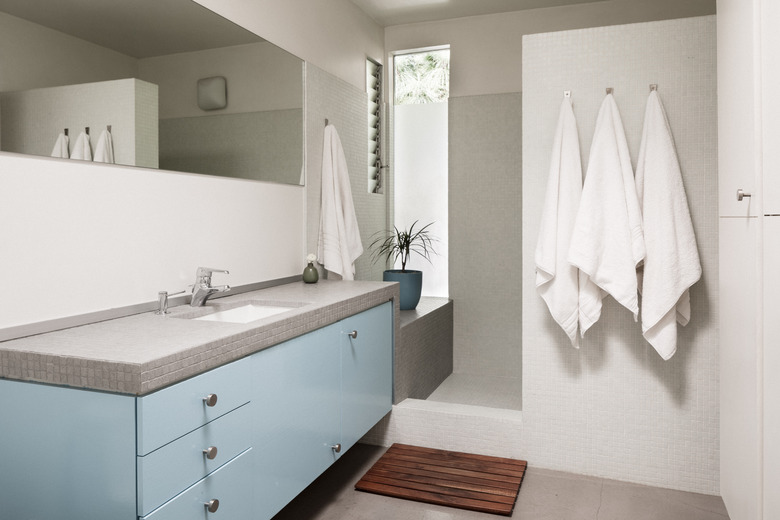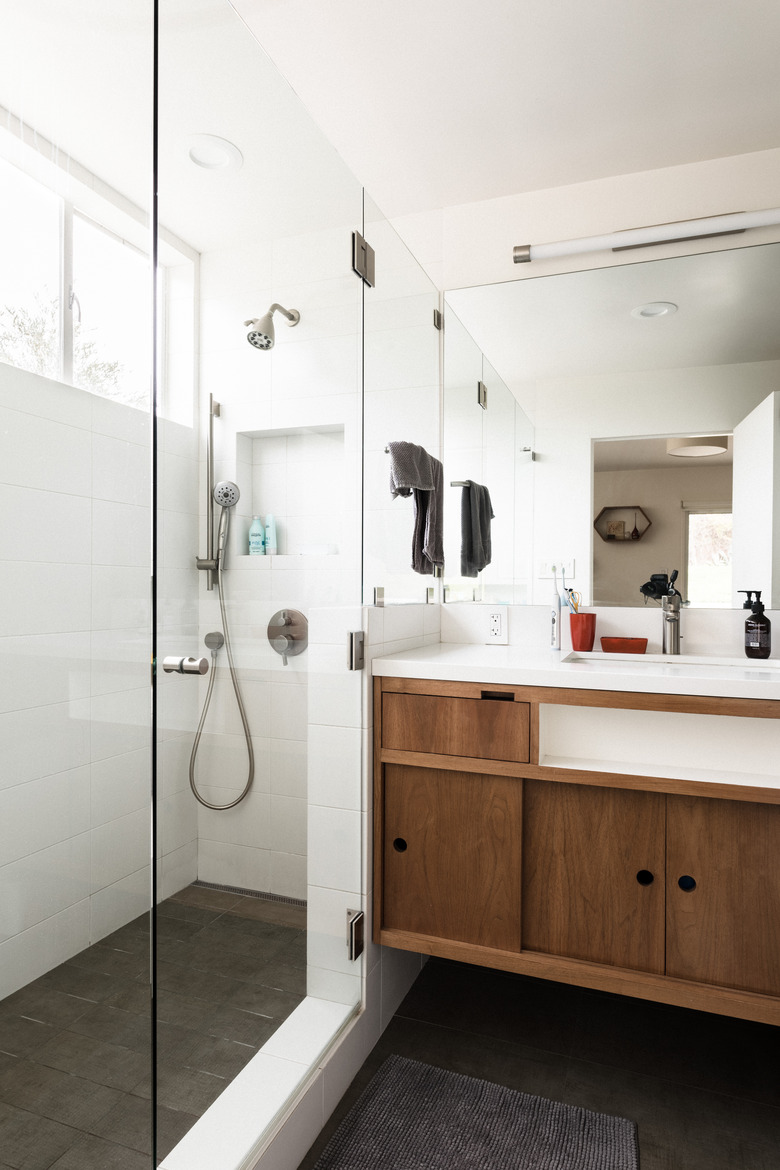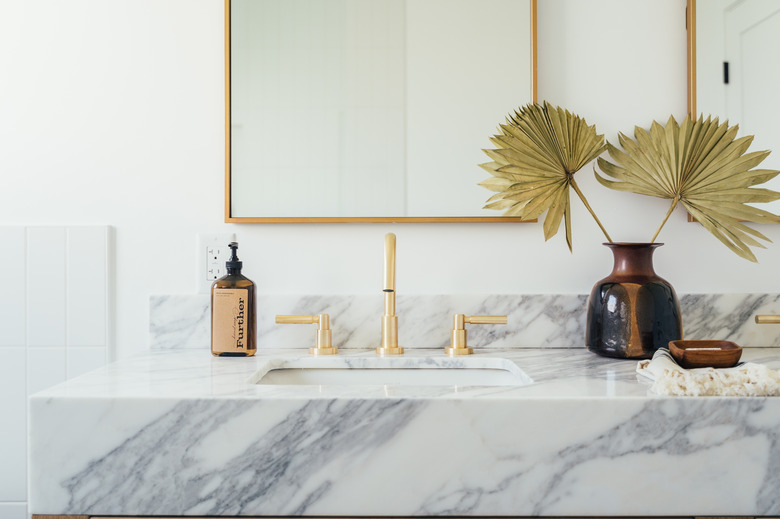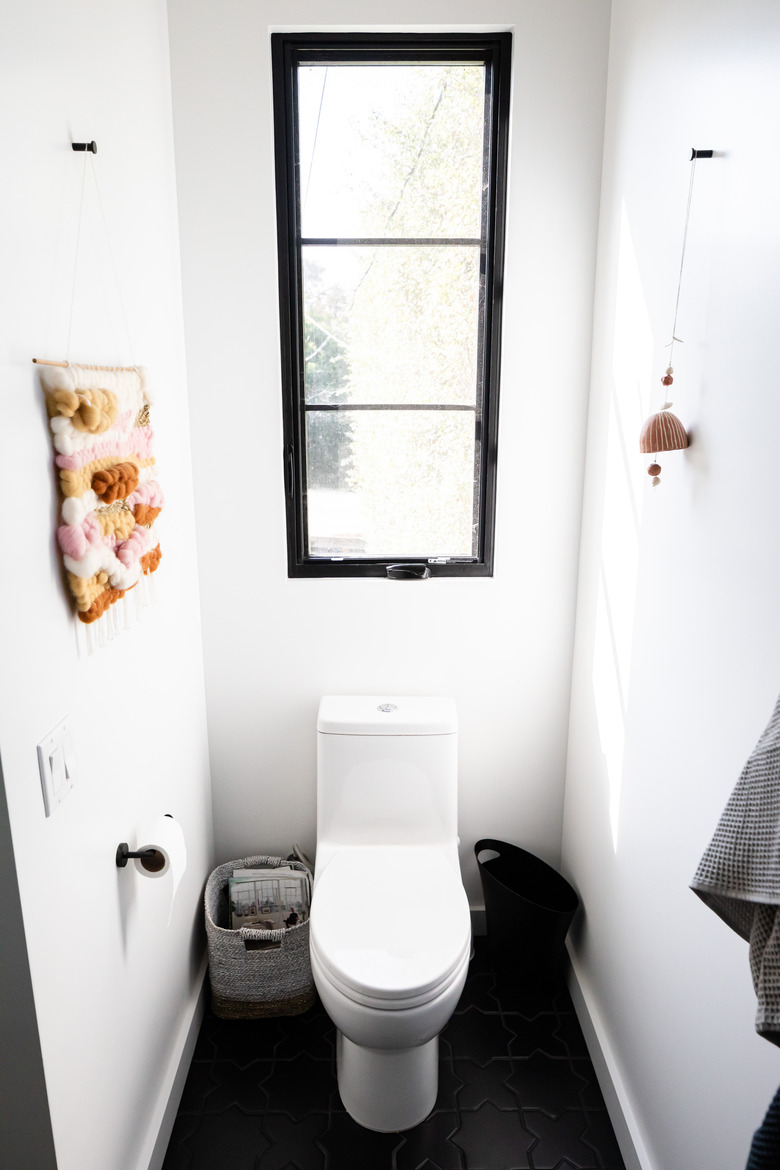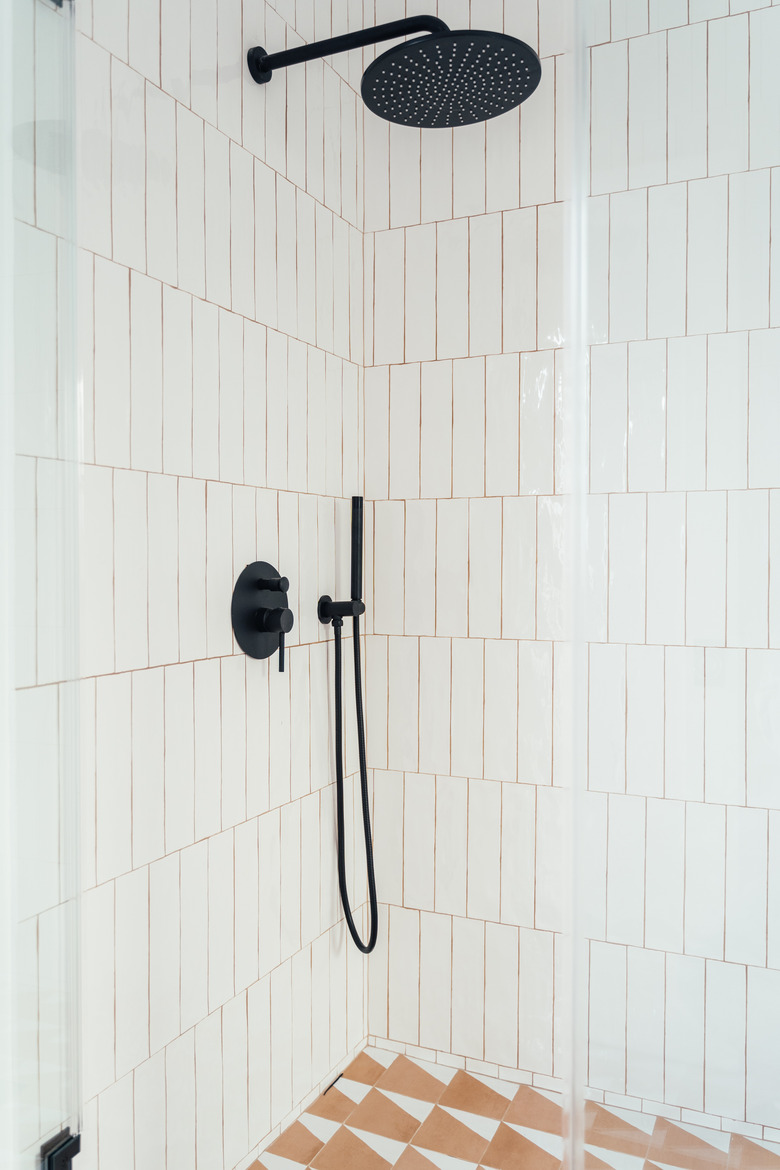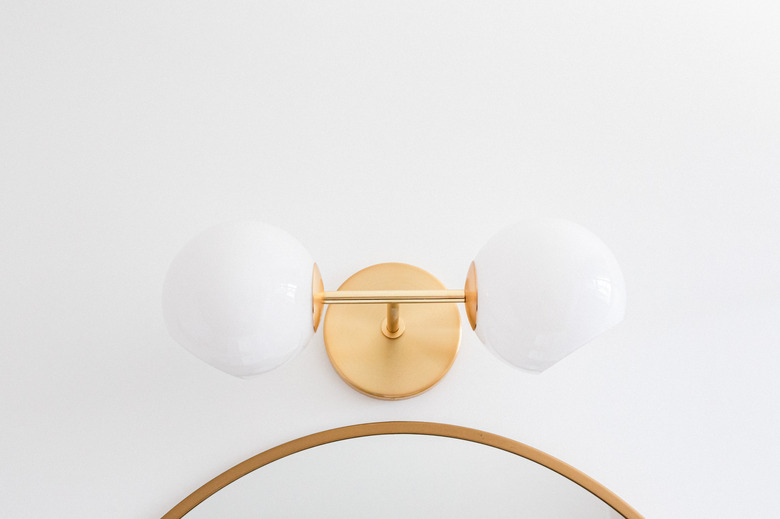7 Bathroom Replacement Projects To Revitalize Your Bathroom
If you have worn or out-of-date bathroom fixtures, a pull-and-replace project is among the easiest and least expensive bathroom replacement projects. With this type of remodel, the layout of your bathroom remains exactly the same, and the fixtures will stay in the same place. A pull-and-replace bathroom remodeling is exactly what it sounds like — you pull out the old fixture and replace it with something new.
Some bathroom replacement projects require tearing open the walls, floor or ceiling to get at pipes and wires, especially if you want to change the location of a plumbing or electrical fixture. If you are satisfied with the size and layout of your bathroom, updating some or all of the fixtures can give it the look and feel of a whole new remodel. Because the location of each component remains the same during a pull-and-replace remodel, these bathroom replacement projects are often perfect for DIYers.
Not all DIY home improvement projects turn out as planned, but most pull-and-replace bathroom replacement projects can be completed by a moderately skilled DIYer. Although smaller projects like replacing a toilet, faucet or light fixture don't require a permit, you'll need one for jobs like moving a sink or adding an electrical fixture. To be safe, you should always contact your city's building department to ask about local code requirements.
Replacing a Bathroom Vanity
Replacing a vanity in your bathroom renovation can make a big difference in the overall appearance of your bathroom. Vanities and tops are available in a large variety of colors, sizes and designs. If you have the space available, a larger model can have a big impact on your bathroom. If you're looking to gain a little extra room, downsize to a smaller vanity.
Warning
Before you remove a bathroom fixture connected to plumbing in your remodeling project, always begin by shutting off the water supply.
To remove a vanity, you'll need to disconnect the plumbing pipes and remove the sink. After taking out the screws holding the vanity in place, you can remove the old vanity. Before installing the new vanity, locate the wall studs in the area — you'll screw into them to secure the vanity to the wall. While an experienced contractor can often find studs by tapping the wall with his knuckles, you'll be better off using a stud finder or using the screw holes left by the old vanity.
If your new vanity has a back panel, mark and drill holes for your pipes and then slide the vanity against the wall. Make sure the vanity is level and then secure it to the wall with drywall screws or wall anchors if it doesn't line up with any studs. Attach the vanity top (often with the new sink and faucet installed) using silicone caulk and reconnect the plumbing pipes.
Replacing a Bathroom Faucet
If you like your vanity and don't want to change it just yet, a quick and easy way to update your bathroom is to install a new faucet. Faucets come in many styles and designs, with several finishes including nickel, chrome and stainless steel. They are also available in single- or double-handle models with single-hole, widespread or centerset mounting styles. Widespread faucets can sometimes be more difficult to install than a centerset or single-hole faucet.
Using a basin wrench, disconnect the flexible water supply lines and then the faucet mounting nuts. Remove the faucet and insert the new faucet using silicone caulk or plumbers' putty to seal its base. Tighten the mounting nuts and reconnect the water supplies. You may also need to remove the old pop-up drain assembly and install a new one unless the new and old faucets are similar.
Replacing a Toilet
Replacing a toilet, if all goes right, is a great DIY project. The first thing to know is the size of your toilet. Measure from the wall to the toilet's mounting bolts. This will tell you if you have a 10-inch, 12-inch or 14-inch toilet.
Removing the old toilet is easy. Turn off the water using the valve behind the toilet. Drain the toilet, disconnect the water line and then remove the nuts from the mounting bolts at the base of the toilet. If the nuts are stuck, use a hacksaw blade to cut them off. Then, the toilet will lift right off. Just remember that some toilets are quite heavy.
Before installing the new toilet, check the condition of the toilet flange. If it is cracked or damaged, you may need to call in a plumber to fix it. If it looks good, you can install the new toilet.
Start by installing new bolts on the flange. Brass bolts work best. Set a new wax ring on the flange and set the toilet on, aligning the bolts with the holes in the toilet base. Tighten the mounting nuts — not too tight, or you risk cracking the toilet or damaging the flange. Then, reconnect the water supply and open the shut-off valve.
Replacing a Shower
Replacing a tub or shower is one of the more labor-intensive DIY projects and will require at least two people. After measuring the shower to make sure you get the same-size replacement, turn off the water to the shower. Remove the shower faucet knob and trim plate and then remove the shower drain. It's sometimes easier to cut the shower drain pipe from below and then use a coupling to reconnect to the new shower drain.
Cut the drywall along the edges of the fiberglass or acrylic shower and remove the screws holding it to the studs. Remove the shower surround (this will usually take two people). Measure and drill a faucet hole in the new shower surround. Clean the area and set the new shower in place. Once it is level, screw it to the studs. Attach the drain and reinstall the faucet trim.
Replacing a tiled shower follows a similar sequence and usually involves installing a new shower pan, replacing old drywall with cementboard and installing new tile.
Replacing Light, Fan and Outlets in the Bathroom
If you have a fan that sounds like a jet taking off, a new one will not only be quieter but it will also work better. According to ENERGY STAR, a fan that is certified by ENERGY STAR will use 60 percent less energy and have a longer life than conventional models.
Warning
Always switch off the breaker circuits to the bathroom before beginning a pull and replace project that involves electricity.
To replace a bathroom fan, remove the grille and remove screws to disconnect the motor. Check the wires with a voltage tester and then disconnect them. Next, you will have to go into the attic and remove the old housing and install the new housing. You should be able to use the old vent pipe, but if not, you will need to run a new one. Connect the wires and install the new grille.
Replacing a new light fixture is usually a simple project. After turning off the power and testing it, you simply remove the old fixture, disconnect the wiring and then connect the wiring and attach the new fixture. The same procedure is followed when replacing electrical switches and outlets. New switches and outlets are small details that can make a big cosmetic difference in a bathroom remodel, and if your switches and outlets are old and outdated, replacing them can serve a functional purpose as well. If you have an older home with older wiring, you may need to replace the wiring before installing new fixtures. This can be a big project and will usually require hiring an electrician.
